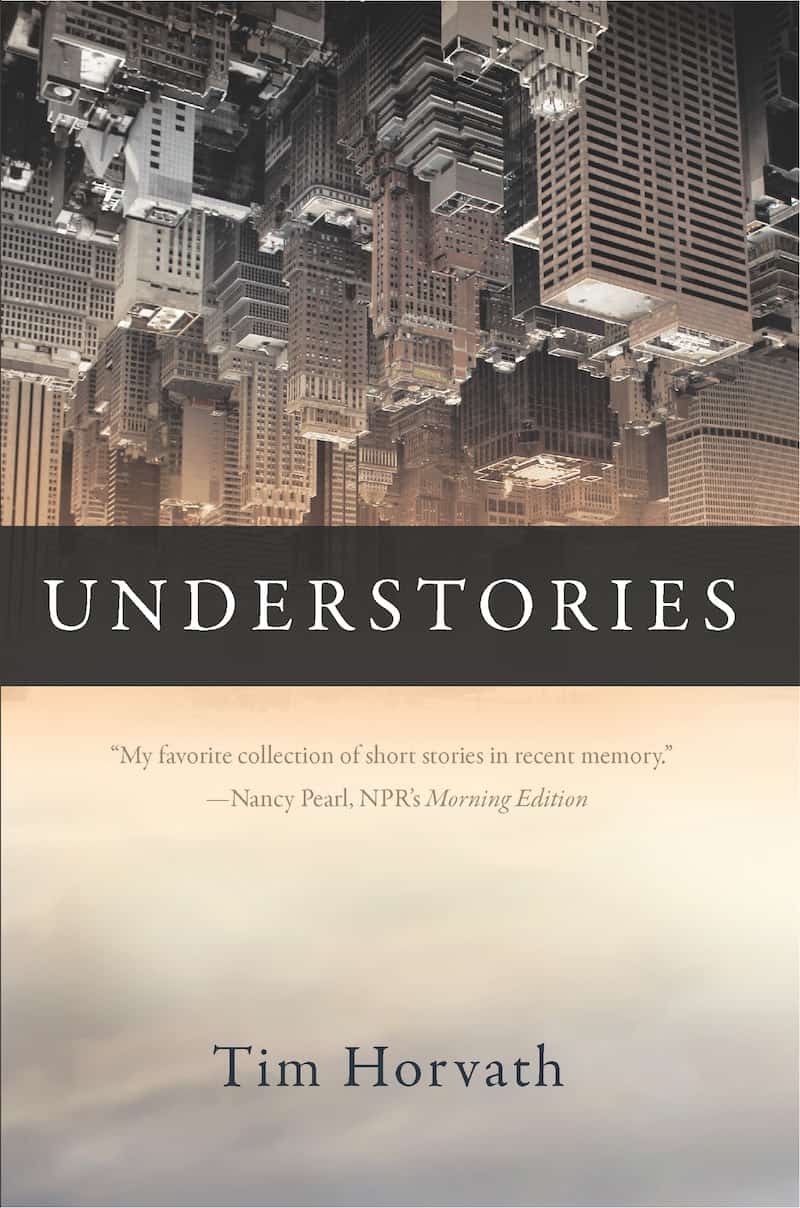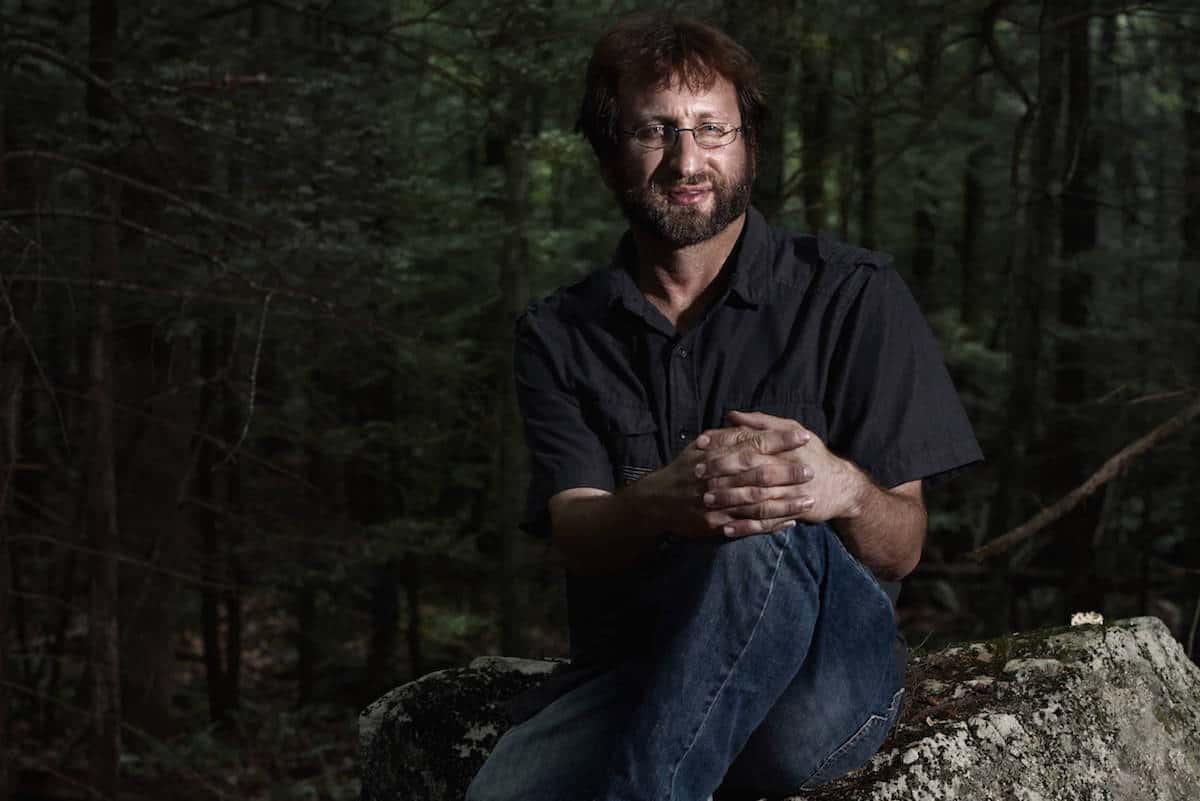“For me, fiction is a way of accessing the sense that the universe is the possible, not just the actual.”
Some folks, like one of the main characters in New Hampshire writer Tim Horvath’s short story collection Understories, live life from the proverbial canopy, standing at the top and looking down and far afield at the vista. Others, Horvath included, prefer the understory.
In a forest, the understory comprises those shrubs and small trees that live beneath the larger trees, or canopy. Forced to make do with less light and higher humidity, these trees are often the scrappier characters in the play of forest life.
They also, to continue the character idea, are potentially the most interesting. Their vantage point is like no other. It is this perspective that drives Horvath in his writing.
“You know, Martin, it’s strange,” writes Professor Schoner to his friend, Martin Heidegger, in “The Understory.” “Trees have always defined the forest for me. I climbed in the canopy, because I thought that’s where the best, truest view was. But in the wake of the Storm of 1938, I find that the little plants of the understory have become very dear to me, dearer than I could have ever imagined.”
“That’s what underlies my work—the hidden stories,” Horvath says as we discuss Understories and his forthcoming first novel—about the conflicted relationship between two composers who first meet at music school in Hartford, Connecticut—in a quiet study room at, appropriately, the Hartford Public Library.
“For me, fiction is a way of accessing the sense that the universe is the possible, not just the actual. The possible and the plausible are equally active. So I’m more interested in the relationship of those two than the actual. I’m interested in what might have happened.” Horvath gives an example: what if Gauguin had gone to Greenland rather than Tahiti? “Would he have been a different artist or would he have Gauguinized wherever he went?” he ponders.
“I think I do believe that quote [by poet Muriel Rukeyser] that ‘the universe is made of stories, not of atoms,’” Horvath adds. “Stories are how we construct, how we give our lives form, shape, and purpose. They provide maps to help us find those things.”
“The Understory” illustrates another key driver in Horvath’s writing: he is an experiential writer. He took a forestry class that in part prompted the story, which is about a German professor of forestry. He has also taken up the trumpet because one of the characters in his novel in progress plays the trumpet.

Understories Cover | Publisher: Bellevue Literary Press | Published Nov 24, 2012
He moved to New Hampshire in 2003 to get his Master of Fine Arts at the University of New Hampshire. He lives with his wife, Mary Ann Cappiello, and their 10-year-old daughter, Ella, and the location figures large in his writing. “I love the role landscape can play in writing,” he says. “It can be more than a backdrop. It can be an integral character, an intimate device.”
Horvath grew up surrounded by writing. He lived in Bloomington, Indiana, until he was nine. His father was an editor at Indiana University Press. “One of our favorite family stories is about my father having breakfast with [Latin American writer Jorge Luis] Borges,” he says. “I was not aware this was a big deal. I totally missed the significance of it.”
When his parents divorced, Horvath moved with his mother and brother to Yonkers, New York. That’s where Horvath first started writing. “I had some great teachers who really encouraged that,” he says, noting his first “work” was about the move from Indiana to New York. “That was the big adventure in my life at that point.” Horvath loved fantasy as a genre, so another of his first “books” was “The Adventures of Peter Chesapeake.” “I hand wrote it, all six volumes,” he says. “It was a cross between [The Chronicles of] Narnia and The Lord of the Rings.”
Horvath says he identified as a writer in junior high and high school. Being a day student from Yonkers in Rye Country Day School, a tony private school, left him feeling a bit isolated. “It was a strange experience for me,” he says.
Some terrific English teachers helped make the road a little smoother, he says, citing Carol Lichtenfeld and Morrow Jones in particular. “We forged a real bond,” he says of Jones. “He taught an amazing creative writing class. We subscribed to The New Yorker. I didn’t really appreciate it at the time, but I was reading late [Raymond] Carver’s most successful stories.
“We were always engaged in these experiments,” Horvath continues. “One week an absurdist play, one week a poetic form like the sestina. I got into the habit really early of thinking of variety as being at the core of what one could hope for in writing rather than settling into any one thing.”
When Horvath arrived at Vassar College, though, he didn’t feel accepted as a writer there. “Vassar had a subculture of writers who seemed well established,” he says. “I didn’t feel a part of that.”
Instead he focused on philosophy, which he also studied in high school. “It really had a profound impact on me,” he says. “I put writing on the side burner. I still loved English and literature, but I figured if I don’t take philosophy I’ll never understand.” Ultimately, he majored in Philosophy and minored in English.
Horvath taught high school English after graduation, which left little time for personal writing. After a few years, however, he realized he missed writing, so he began taking some classes at The Hudson Valley Writers’ Center. “It felt like this wonderful indulgence, having someone talk about my work,” he says.
It was a summer at Bread Loaf School of English in Middlebury, Vermont, and a short story class with writer David Huddle that finally brought Horvath to add the word “writer” to his personal description. “For a final project, I asked him if I could do a creative paper,” Horvath says. “He granted permission, and that dubbed me a writer in a very miniscule way. So it was very gradual.”
Today—at least in the summer, when he is off from his teaching job at the New Hampshire Institute of Art— Horvath writes 1,000 words every day. As with all writing, some days go better than others. Taking notes for his novel in progress while listening to music recently, for instance, was a relative breeze. “I felt like my hand could barely keep up with my mind.” But plot—that’s often trickier. “I feel like I can write sentences well. I feel confident about my sentence-to-sentence ability,” he says. “I see novelists who are really comfortable with plot. That’s the biggest challenge. I like someone who can tell a great story, and I like someone who can tell it in gorgeous sentences.”
The working title of Tim Horvath’s new book, his first “official” novel, is The Spinal Descent. It’s about two composers who become roommates while in music school in Hartford, Connecticut. They spend a few years after college in a competitive, but still amicable, relationship. One of them, Leonard, is more avant-garde, while his friend/frenemy is more commercially successful. Ultimately they have a falling out. “Leonard’s people skills are not great,” Horvath says. Circumstances bring them back together later in life, and their reunion is the basis of the novel. Horvath chose this excerpt to give us a sense of how Leonard speaks. “I wanted something that would capture the voice,” he says, noting it’s written in close third person.
* * * * *
He’d saved every scrap of printed matter with his name from over the years. The first article, which came when he was still a college student, when he could fancy himself a kind of phenom, he’d sliced brazenly out of the Hartford Courant with a razor blade. This became his tradition thereafter. In his best years, his roaring late 20s, the paper clip holding them all together became splayed. He called them the foie gras years, the commissions and the performances and the recordings coming in a glut, one felt in the liver, as he was wined and dined and treated a bit like a goose himself. The thirties turned lean, though. He’d always figured he’d outgrow that first clip, but it had proved more than adequate for the task, and the clippings began to fade, the paper turning the yellow-brown of drought grass. One razor blade, one clip. Nothing to slice, except . . . but he wasn’t that despondent. It was a phase. His life’s second movement. Maybe it was what was needed. And so he awaited the third movement eagerly, anxiously.
In that single clip were the screeds, the glowing homages that missed the mark but which he’d take anyway, and everything in between. In interviews, he could be pithy and remorseless, but he spoke for a greater cause, Music, and if he had to tear down a couple of peers along the way, well, it was necessary, radiation trained on a tumor before it could spread. But when he got out of the hospital and went through the folder, a new sensation spoked through his chest that he could only think of as the tympani of mortality. He wondered whether he’d overdone it at times. He’d torn apart raftloads of “composeurs.” They knew how to manipulate sound but had “perhaps watched too many videos” (two was too many) and could not distinguish between music that was mere glaze and the meat itself. Music was the meat. It should have been. It should have been the thing that other things were built around, slathered over.
Follow Tim Horvath online and on twitter.
This article originally appeared in our October 2015 Print issue.










